How to prepare for an exhibition can be a complex and multifaceted process (not to mention at times overwhelming) and whilst every exhibition stand differs, there are consistencies that align your experience with those who have done it all before. In order for you to feel ready ahead of being at your next exhibition or first exhibition, we have prepared a checklist that will help you start planning by walking you through purchasing to being onsite.
Budget
A simple word that holds the most power over your exhibiting experience, and is simply the most important element of the stand. The budget is the first item on your checklist for a reason, it will define the limitations and breadth of your trade show experience. Understand that an exhibition stand is an investment and should be considered as a long term investment rather than a once off.
Budget Tips
- Set a realistic budget: Work with the teams in your company to understand what a realistic budget is. Understand how far dollar amounts will get you when organising an exhibition. Set this expectations up ahead of starting to organise the exhibition as falling short may have a detrimental effect.
- Keep track: Track your budget. Through every piece of the planning process track where the expenditure is going.
- Think long term: For the most cost effective experience think about the exhibition as being long term and reused in the future. This will help to shape a high quality reusable installation which will save you in the long run.
- Scope the market: There is always another option. Before signing off on a quote scope competitor prices and alternative options to ensure you are purchasing something as cost efficiently as possible.
Budget considerations
Ensure your budget considerations don’t just include the exhibition build. A trade show presence goes beyond the time at the event and the budget should include some of the following:
- Exhibition stand
- Stand build
- Event advertising
- Staffing
- Onsite event costs
- Materials
- Onsite product
Whilst considering a budget can seem never ending, it is the most important way to attend a trade show successfully. Budget sensibly and your trade show planning will run smoothly.
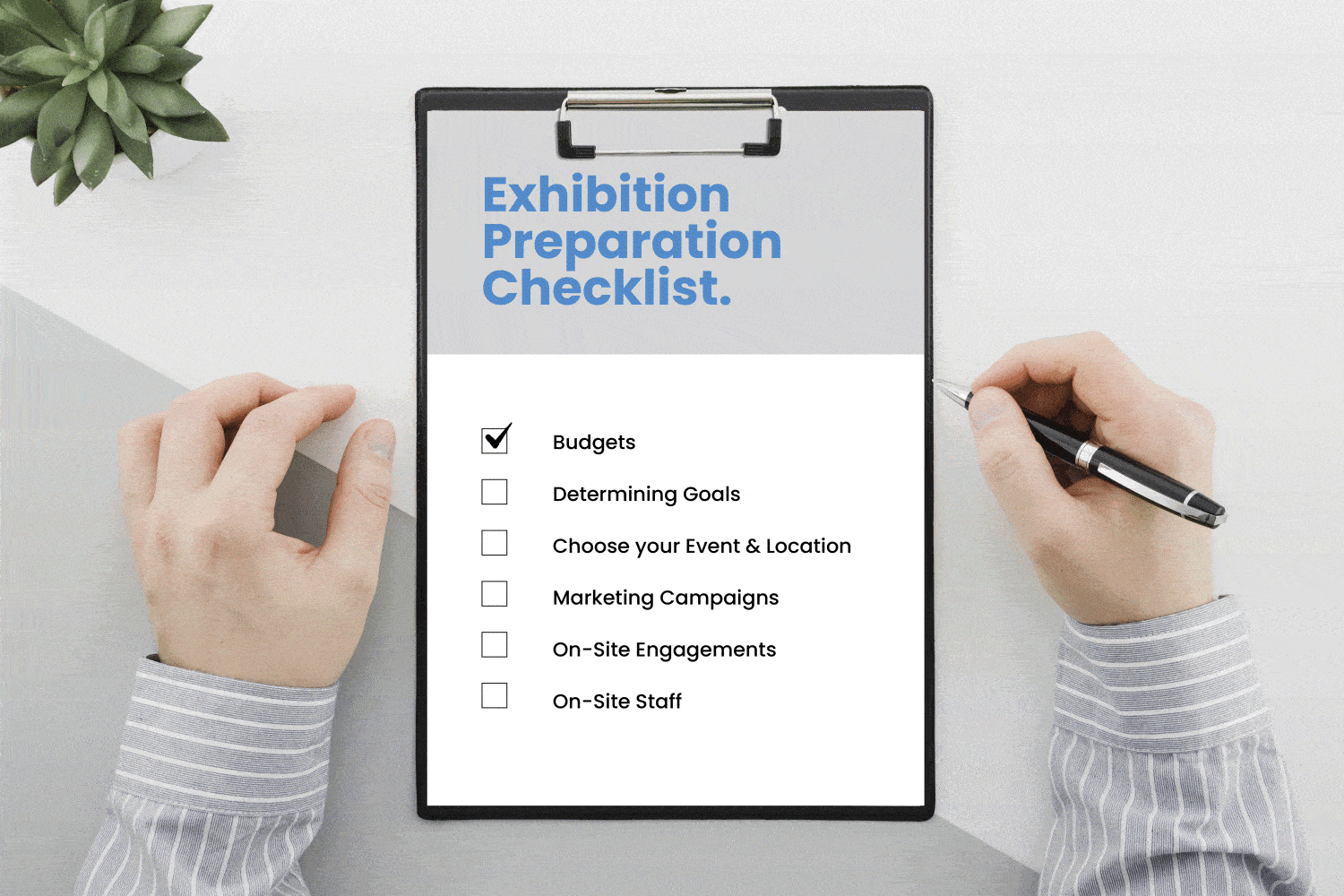
Determine your goals
As you start planning, consideration should be given to your company’s goals and objectives of being onsite. Not only will determining your goals provide a measurable KPI to understand whether exhibiting for you was worthwhile but it will also shape a variety of other functionalities within the stand.
Understanding your goals will help decipher who your target audience is, what your stand will require and which event is most suitable for you to attend.
Exhibition goal ideas
Most organisers use exhibitions to focus on business goals that either support broader annual KPIs or ones that require interaction to achieve. Whilst being onsite businesses can look to lean on their exhibition presence to attract people to build potential leads, this will include receiving their contact details to use as warm leads in months to come. Alternatively companies may look to use the trade show to educate on their products through demonstrations, or look to promote new products and services.
Understand your exhibition audience
A company’s target audience within the industry is certainly understood as a bare minimum. An exhibition audience may differ for businesses as it creates an opportunity to target an audience outside of existing customers. Companies should understand all attendees of their chosen event to decipher the perfect opportunity to grow their database.
The target market should look to build new clients whilst on site that can be followed up at the completion of the event and in turn, turn into hot leads. Through the relationship and experience at the event the potential clients and potential customers may transform into potential buys, each playing a role in conversions for the business and generating sales. Additionally, companies may choose to use the event as an opportunity to strengthen relationships with existing clients.
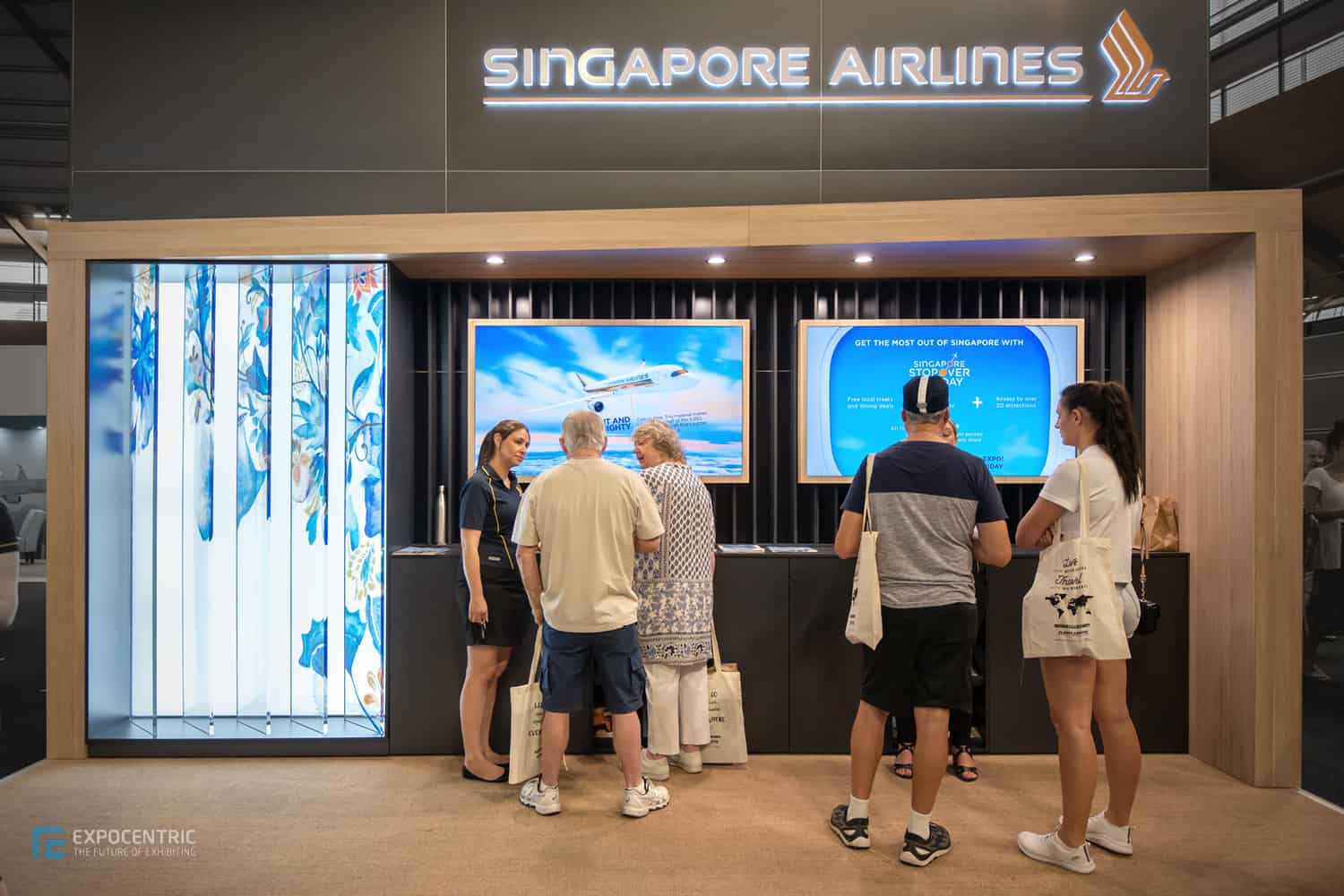
Scope the competitors
What are your competitors doing? Do your competitor research to see which companies you should keep an eye on. Whilst most of the time your company should look to move away from being in direct competition with competitors, exhibitions are an exception to the rule. Understand which events your competitors are attending and aim to have a presence at the same ones. These other businesses align with your target market and thus some of the hard research has already been done. In addition, if they are in front of your target audience, then your company should be in front of them as well.
You may find at some events, the event organisers will categorise the floor plan, not with the aim of putting you up against your competition, but to facilitate the attendee experience. This traffic flow onsite may work to your company’s advantage.
Choose your event and location
With a budget determined, goals set, audience understood and competitors scoped, your company will be in a position to make an informed decision on your exhibition location. There are two tiers to deciphering the best location.
Choosing the right event
Classifying the ‘right exhibition’ can be a tricky decision. Following the aforementioned checklist items there are a few other considerations that can be made before selecting a successful event. Companies should consider their proximity to the event, and whether any additional costs that may be endured by selecting an event if out of their home location. Additionally, understanding the promotional preparation that goes on in advance for the event should play a role in decision making. Events which have a strong marketing campaign will work to promote your company further as it will drive further word of mouth.
Selecting your stand location
Once the exhibition is confirmed, companies should consider the location of their event space. Within the floor plan, companies should establish how much space they require whilst onsite. Alongside this, they should develop an understanding of the layout of the stand to format the space in the best way. Generally when selecting a position within the venue, companies will look for a central location that receives strong traffic flow. They may also look to align themselves with the trade shows features to increase the chance of receiving strong foot traffic.
Appoint a stand builder
It may come as a relief that once the exhibition and stand space is selected your company can align with a stand builder to continue the stand build process. Spend time researching a suitable stand builder to support your exhibition goals. Companies like ours have worked with all types of companies within every industry having conversations with clients to execute the perfect stand. We are familiar with all types of outcomes your company is looking for, whether it’s a strategy for engaging a new network, to begin promoting new products, gain exposure or to conduct sales.
Companies like Expo Centric have experience working alongside any company for both package stands and custom exhibition stands.
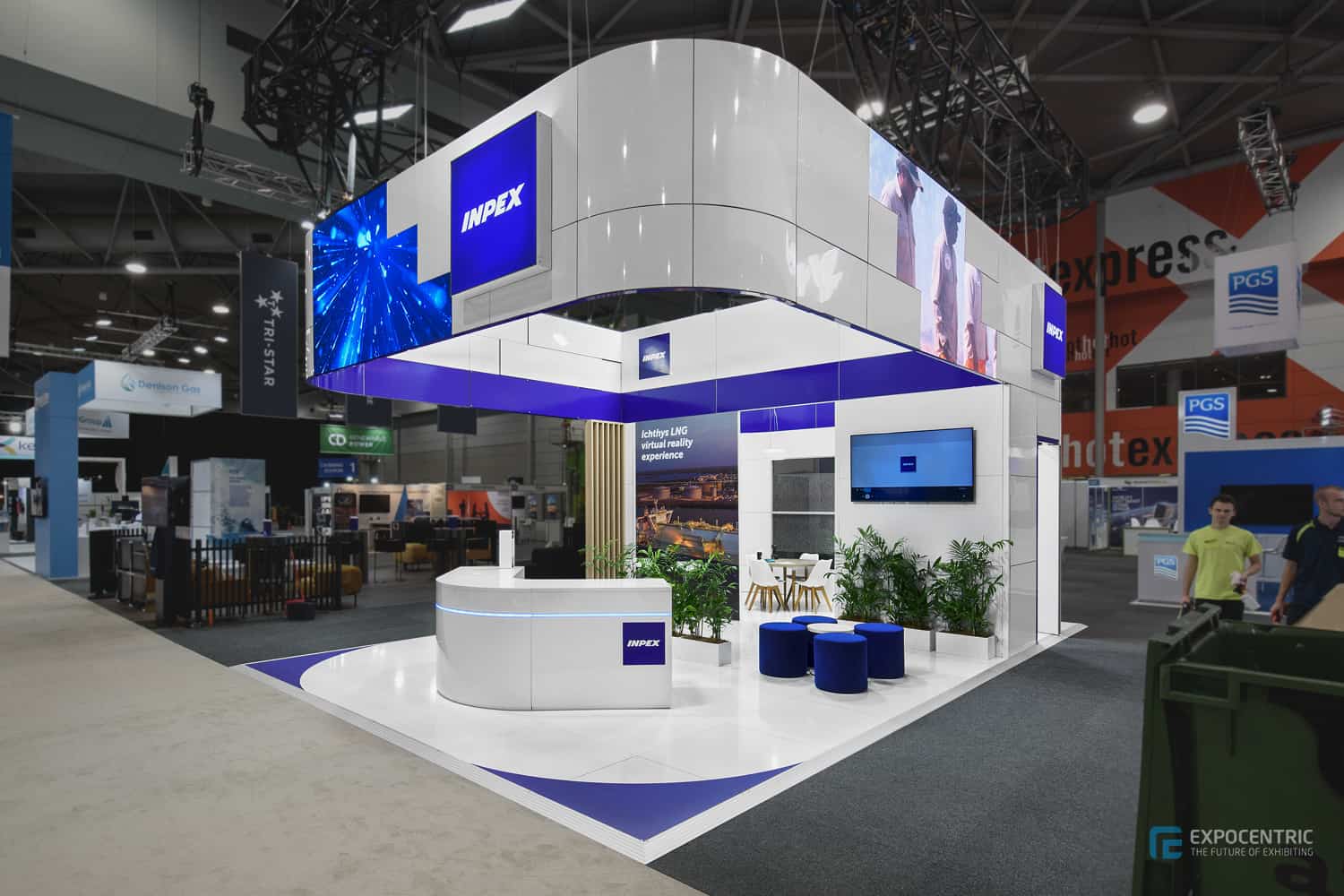
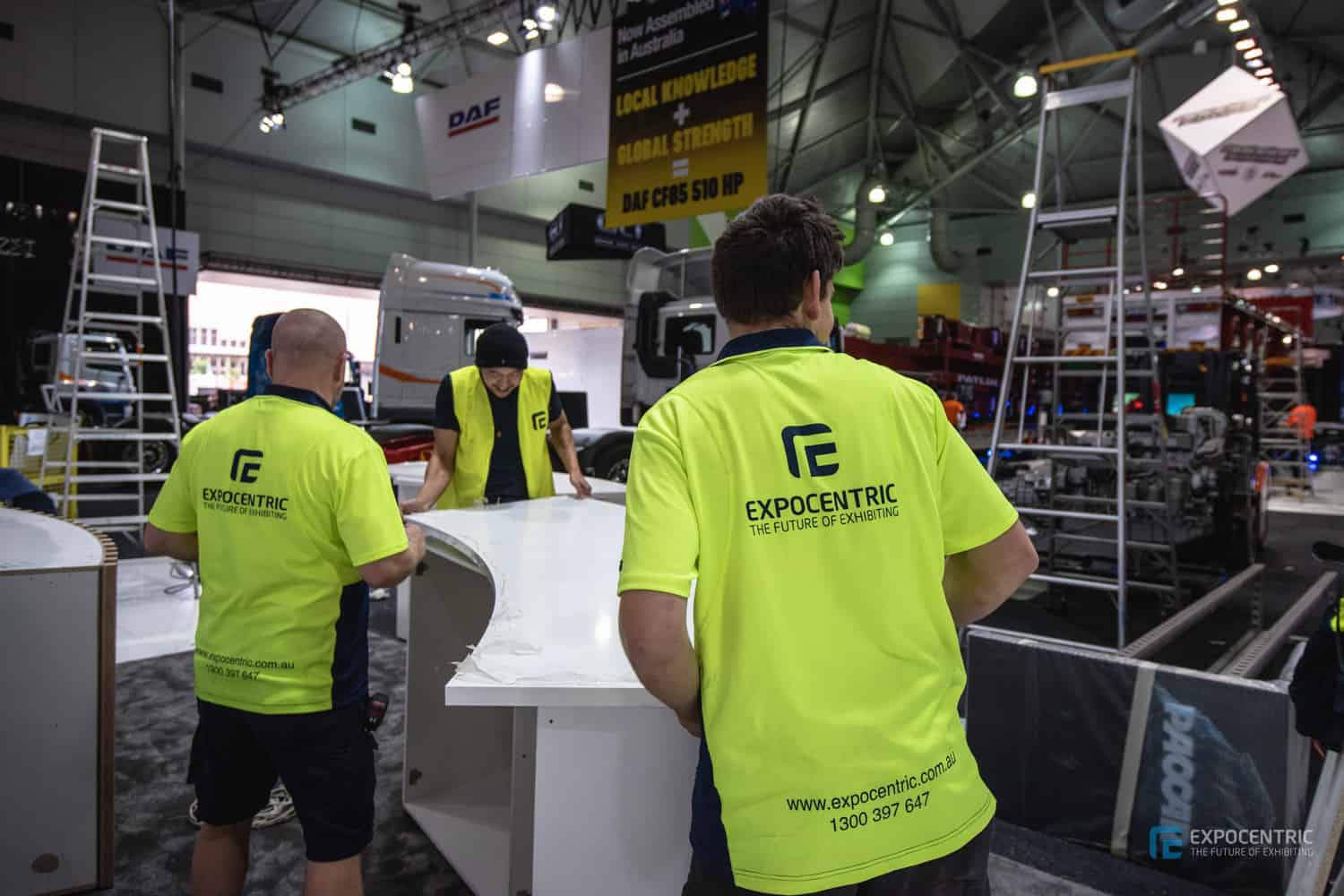
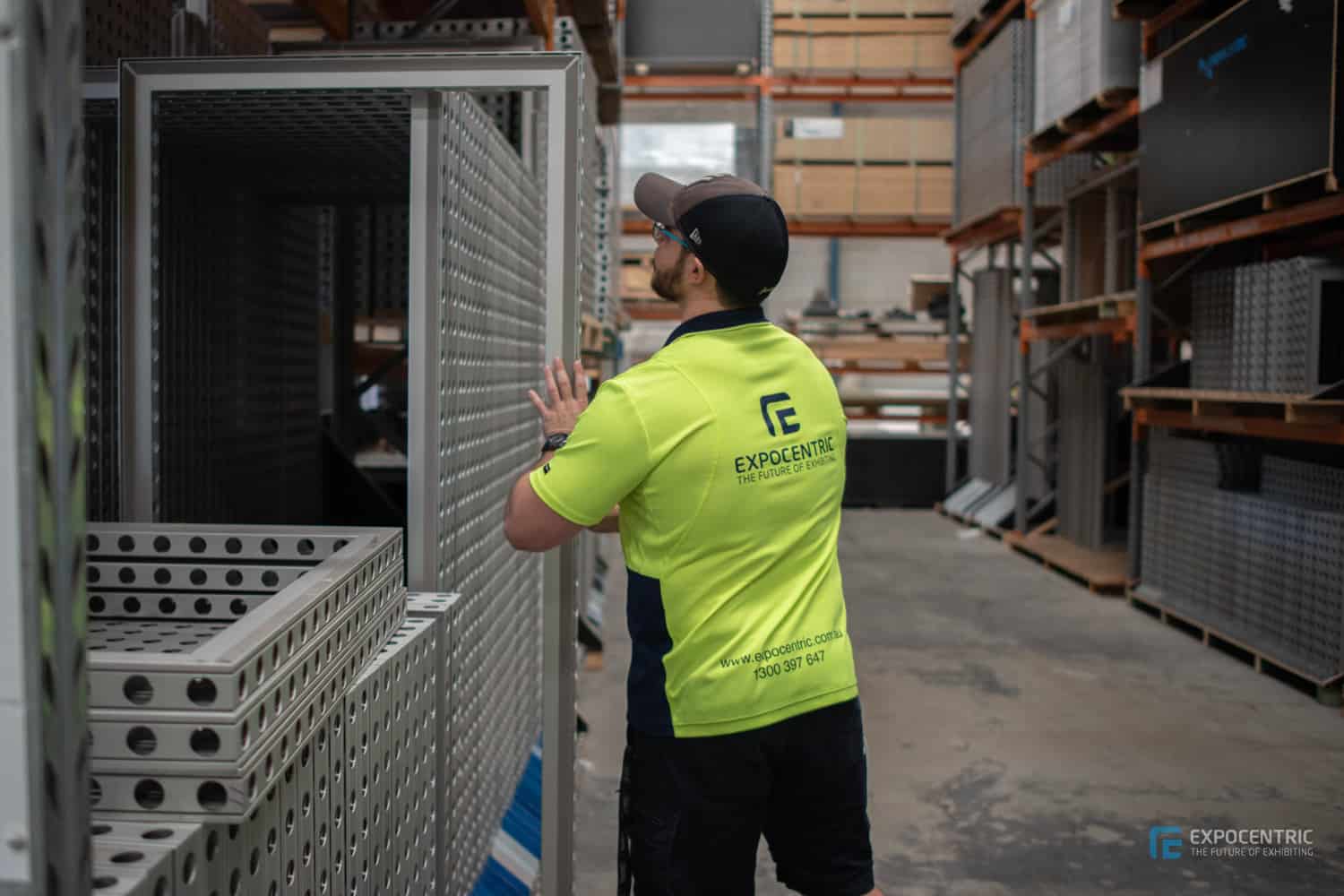
Book Travel Requirements
Despite travel requirements not being an item for local events, consideration should be given for this checklist item for those events that are both interstate or international. Travel booking should occur earlier on in the piece to ensure budgets remain efficient. As part of travel booking consider all transportation including airfares, to and from the airport and once you have arrived. To mitigate transport required once arrived, look to book accommodation close to the venue. Understand if there are any affiliated hotels with the event as at times offers may be available if companies choose to stay in select locations for the event dates.
Start your marketing campaign.
Previous blogs such as 5 Ways To Promote Your Exhibition Before It Starts and Trade Show Marketing Strategy: The Beginner’s Guide cover specific marketing strategies to consider in the lead up to the event. With these in mind your company should consider every element of its marketing campaign from pre-event marketing, through to the collateral onsite.
Pre-Event Marketing
In the beginning it may include information on a company website, articles, and digital messaging through email and social media platforms like, Facebook, Instagram, Twitter and LinkedIn. The pre-event marketing is your company’s first impressions so the material should be eye-catching and should set yourself apart from most exhibitors.
At-Event Marketing
The marketing doesn’t finish as you arrive at the event. Consideration should be given to the collateral your company will distribute whilst onsite. Your company should look to create and display visually appealing messaging with a unique design including signage, banners and promotional material.
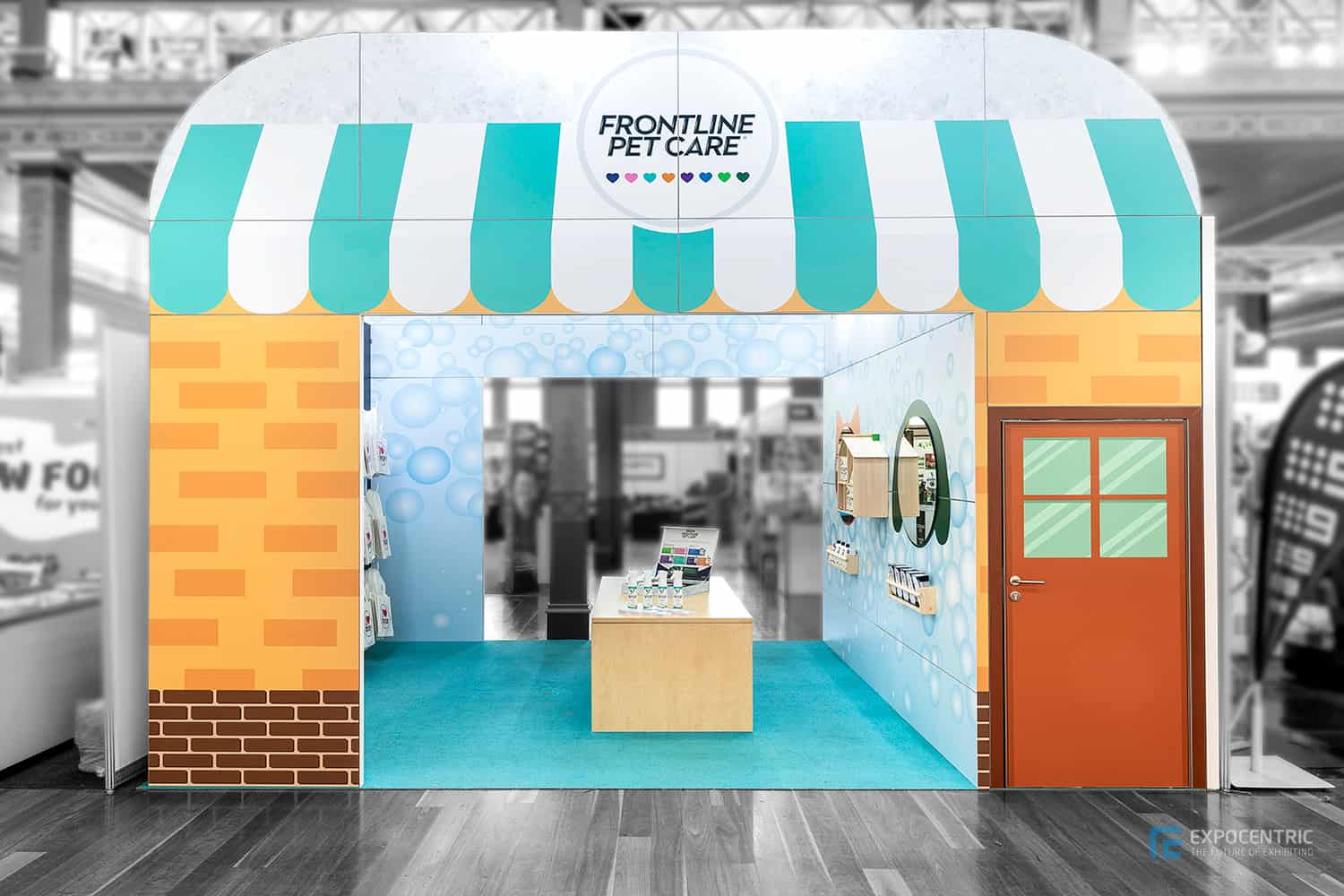
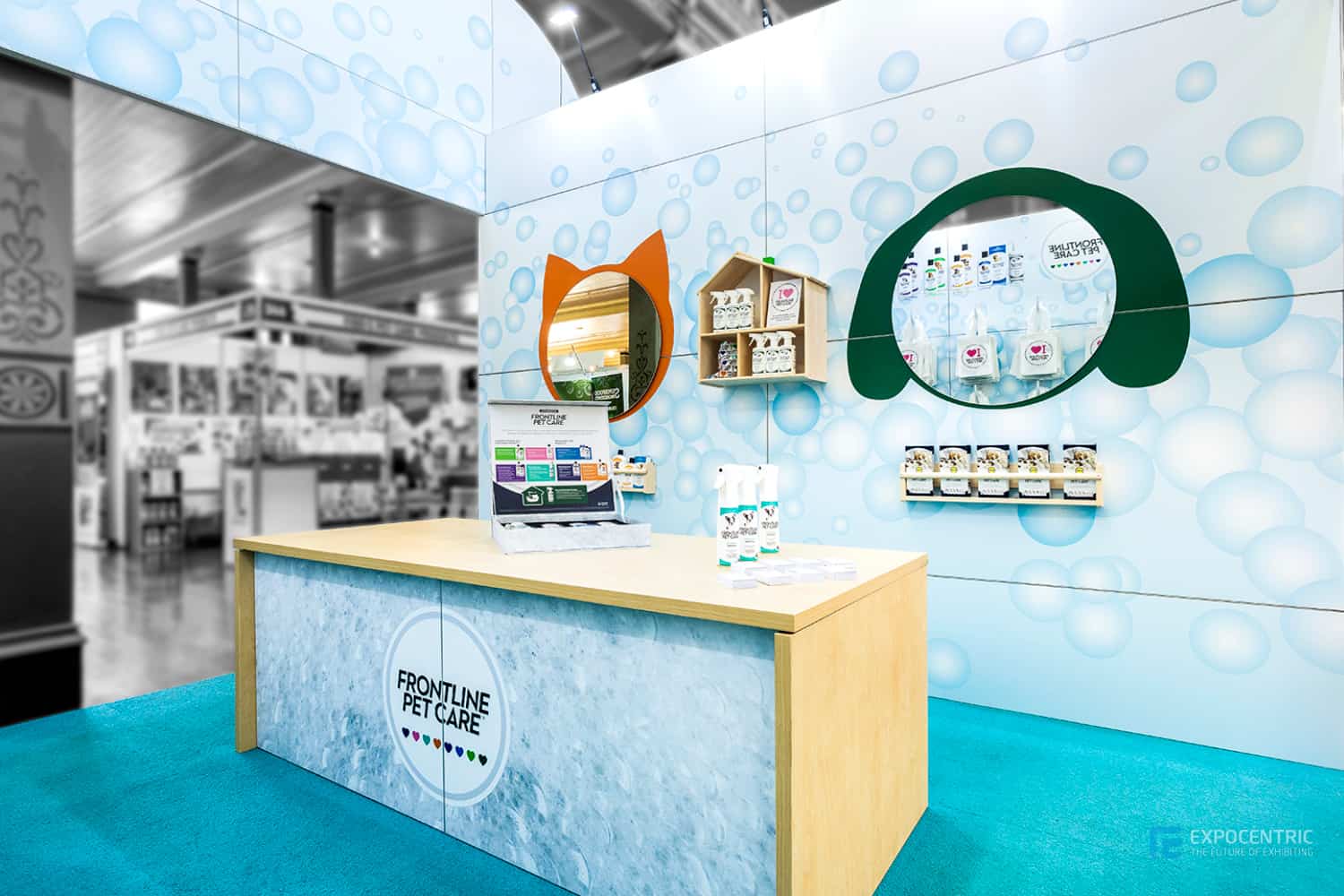
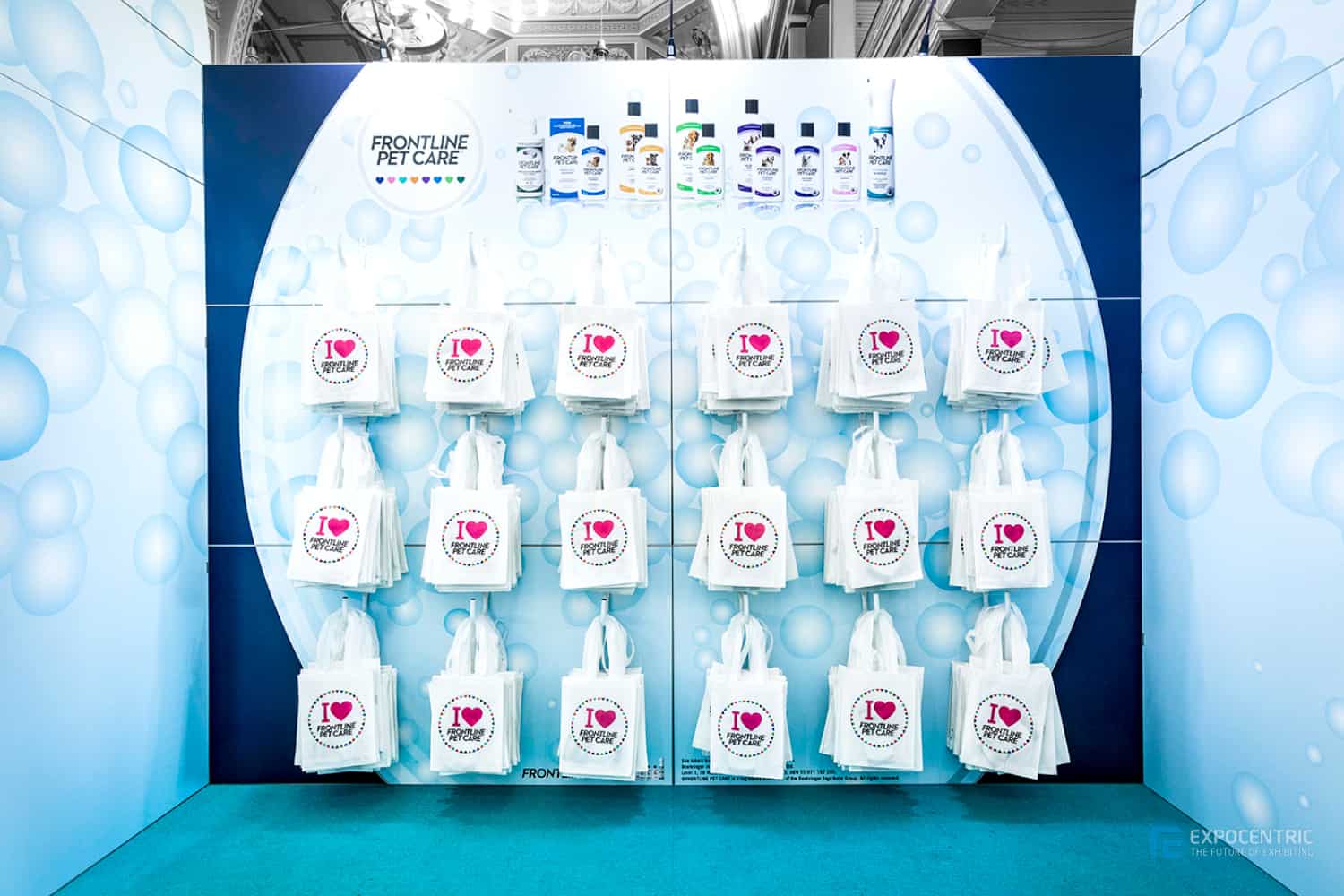
Confirm On-site Engagements
The coordination of engagement pieces within the exhibition booth is a great opportunity for many brands as it works to drive potential clients into the stand. In conjunction with stand design engagements work to facilitate interaction at trade shows.
Product Demonstrations
Product demonstrations provide the opportunity for brands to showcase how their products can be utilised. This type of engagement piece opens the opportunity for the audience to ask questions about the product to develop their knowledge and interest.
Giveaways/Competitions
Giveaways and competitions are often a main attraction within exhibition booths in an effort to drive people onto the stand. In addition to a traffic builder, they are also a successful lead generation builder, with attendees required to provide their details ahead of entering the competition.
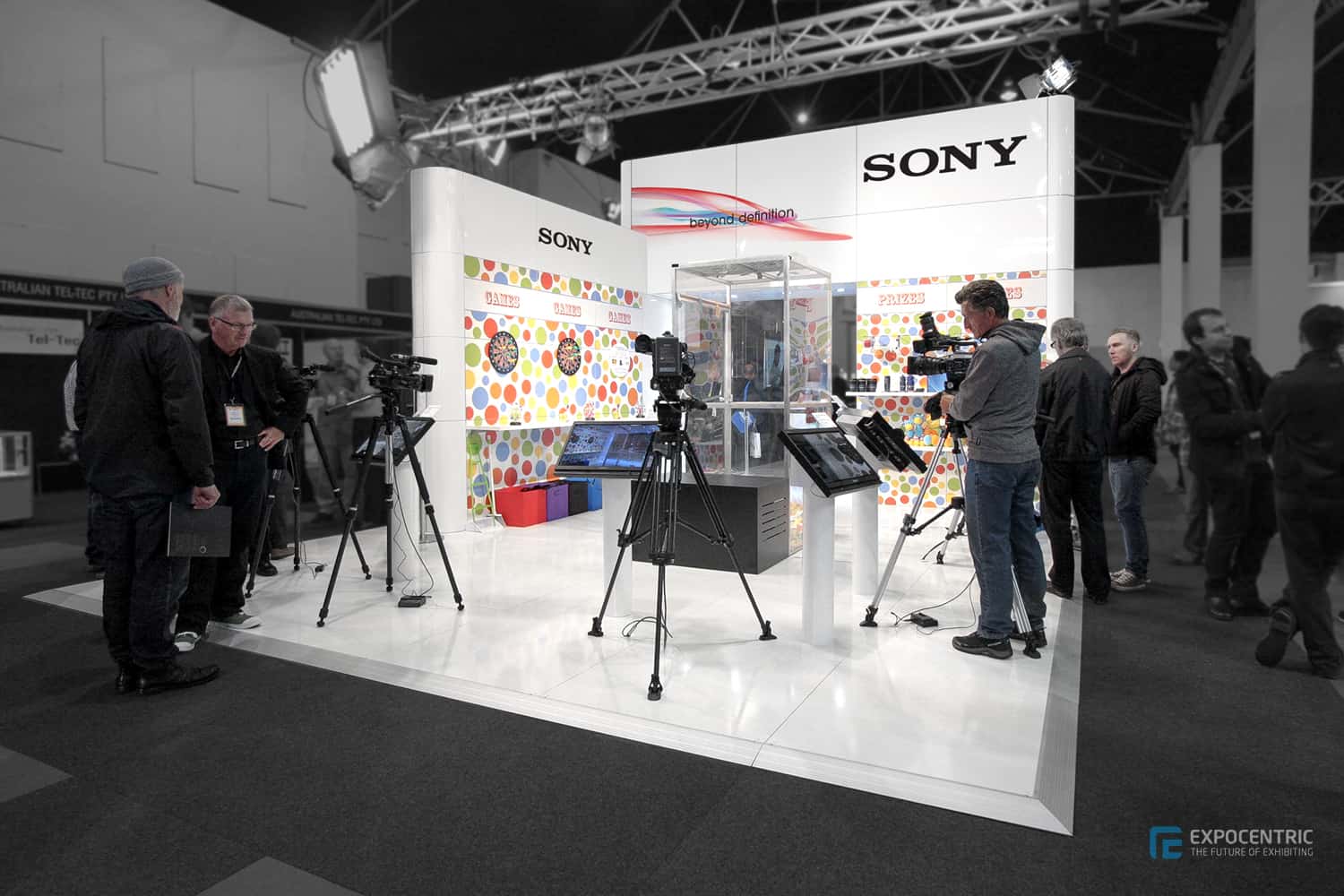
Select the staff
The staff members attending the trade show booth will act as the face of your business throughout the event. Ensure the staff selected are familiar with the company’s onsite goals to ensure they are ready to converse with potential buyers, discuss special offers, and create conversation with any passing attendees. Ensure your employees are able to communicate effectively, understand inviting body language, and create connections with a number of attendees to create a memorable experience onsite.
Onsite Messaging and Material
The purpose of onsite messaging is about creating a good first impression. Aligned with staff members who know the purpose of the event, the onsite messaging should work to represent the brand holistically whilst within the exhibition space.
The onsite materials include everything a company requires whilst being within the exhibition space. This will include all promotional material/marketing materials, products if they are being showcased and materials required for engagement drivers.
Create an onsite checklist
As you may understand by now, checklists are an effective way to prepare for being onsite. Ironically, our final checklist item is to create a checklist of your own. As your company works its way through our checklist, start your own with everything you need to bring onsite with you. This will be utilised to pack your onsite boxes and ensure your company feels as prepared as possible before arriving at your exhibition booth.
With a strong plan and a checklist to start ‘checking’, your company should feel at ease and excited to prepare for their exhibition. Our list will take you from considering being at an event, to standing tall on your exhibition booth. As you can tell, we’ve done a few before so if your company requires a little more support (or another checklist item), speak directly to our events team.
